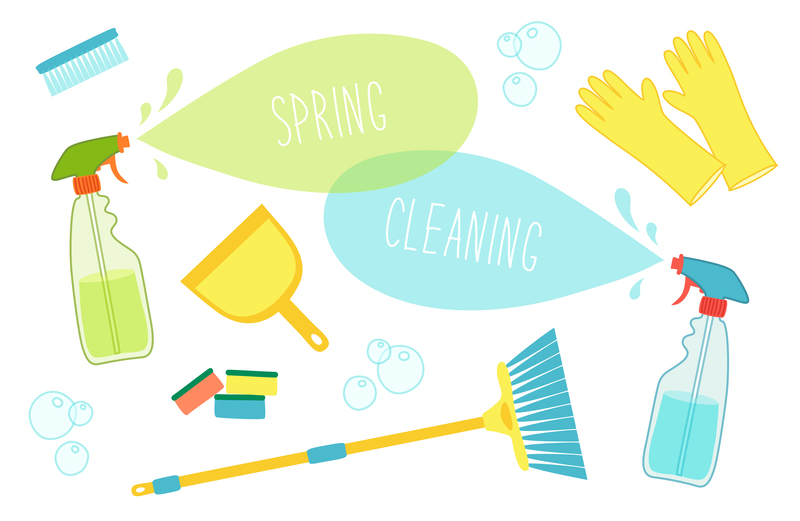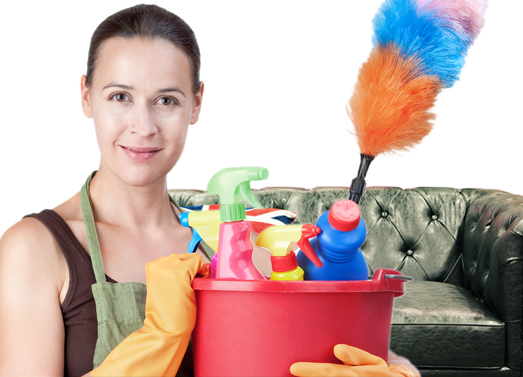Discover the Secrets to an Allergen-Reduced Living Space
Posted on 20/09/2025
Discover the Secrets to an Allergen-Reduced Living Space
Are allergies disrupting your daily life at home? You're not alone. Millions of people struggle with indoor allergens, which can lead to uncomfortable symptoms and even more serious health issues. Fortunately, it's possible to transform your home into a haven of clean air and comfort. In this comprehensive guide, you'll explore the secrets to creating an allergen-reduced living space--from understanding common triggers to adopting practical solutions for every room. Whether you suffer from seasonal allergies or want to enhance your family's well-being, these tips will empower you to breathe easier and live healthier.

Understanding Allergens in Your Home
What are allergens? Allergens are substances that provoke an allergic reaction in sensitive individuals. Common household allergens lurk everywhere--on surfaces, in the air, and even within decorative items. Knowing what you're up against is the first secret to successfully reducing allergens indoors.
Most Common Indoor Allergens
- Dust mites--Tiny organisms that thrive in bedding, upholstery, and carpets.
- Mold spores--Fungi that grow in damp environments such as bathrooms and basements.
- Animal dander--Microscopic flecks of skin and hair from pets.
- Pollen--Outdoor particles that easily enter homes through open doors and windows.
- Cockroach droppings--A common trigger, especially in urban settings.
- Household chemicals and VOCs (volatile organic compounds)--Found in paints, cleaners, and air fresheners.
Identifying the sources of these allergens is crucial. Many household items and practices--like plush carpets, heavy drapery, and poor ventilation--contribute to allergen accumulation. Once you understand where allergens hide, you can begin to tackle them proactively.
Effective Cleaning Strategies for an Allergen-Reduced Home
Adopt a Regular Cleaning Schedule
- Clean high-traffic areas (such as living rooms and hallways) at least twice weekly.
- Wash bedding and curtains in hot water (at least 130?F/54?C) weekly to kill dust mites.
- Vacuum carpets and rugs with a HEPA-filter vacuum to trap microscopic particles.
- Don't neglect hidden spots, like under furniture and behind appliances, where dust accumulates.
Choose the Right Cleaning Tools
- Microfiber cloths: Trap more dust than cotton due to their electrostatic charge.
- Mop with damp pads: Dry mopping stirs up dust, but damp methods capture it.
- Use unscented, hypoallergenic cleaners to avoid introducing new irritants.
Control Humidity Levels
Maintain indoor humidity between 30-50%. High humidity encourages mold and dust mite proliferation. Use dehumidifiers and exhaust fans in bathrooms, kitchens, and basements to keep moisture at bay. Regularly check for leaks or water damage, and repair them promptly.
Air Purification: A Key Element to Allergen-Free Living
Upgrade Your Air Filtration
- Install HEPA (High-Efficiency Particulate Air) filters in your HVAC system to trap airborne allergens effectively.
- Change or clean filters according to the manufacturer's instructions--typically every 1-3 months.
- Use portable air purifiers with HEPA filters in bedrooms and living areas for added protection.
Ventilation: Fresh Air Matters
Proper ventilation is essential for an allergy-reduced home. Open windows when outdoor pollen counts are low, or use trickle vents and exhaust fans to circulate air and remove contaminants. Avoid heavy use of air fresheners and scented candles, which release volatile compounds that can worsen allergies.
Bedding and Furnishings: Make Smart Choices
Hypoallergenic Bedding for Allergy Sufferers
- Choose allergen-proof mattress and pillow covers to block dust mites and dander.
- Opt for synthetic, washable pillows and duvets rather than feather versions, which can harbor dust mites.
- Regularly wash all bedding in hot water to maintain cleanliness.
Minimize Upholstery and Carpets
- Consider replacing carpets with hard flooring (wood, tile, or vinyl), which don't trap allergens as readily.
- Use area rugs that are easy to clean and washable in hot water.
- Choose leather or vinyl furniture over fabric, as they're less likely to retain dust and dander.
Window Treatments and Decor
- Opt for washable curtains or blinds rather than heavy drapes that trap dust.
- Limit clutter and decorative pillows, which can collect dust and allergens.
- Clean decor regularly to prevent dust build-up.
Reducing Pet-Related Allergens
Pets are beloved members of many households, but they can also bring a host of allergy triggers--from dander to dirt carried in from outside. If you or a family member is sensitive, implementing the following steps can dramatically reduce animal-origin allergens:
- Bathe pets regularly (at least once a week) to minimize dander and loose fur.
- Keep pets out of bedrooms and off upholstered furniture when possible.
- Use HEPA-filter vacuums designed for pet hair and dander.
- Groom animals outdoors to avoid spreading dander in the home.
The Kitchen and Bathroom: Controlling Moisture and Mold
Kitchen Strategies
- Immediately clean up food spills and crumbs to deter pests such as cockroaches.
- Wipe sinks and counters daily to eliminate mold and bacteria growth.
- Store food in airtight containers to minimize allergen contamination.
Bathroom and Laundry Room Tips
- Fix leaks promptly to prevent mold-friendly dampness.
- Use exhaust fans to control humidity and dry surfaces after bathing.
- Regularly clean grout lines and tiles with mold-inhibiting solutions.
Allergen-Reduced Living Spaces for Children
Children and infants are extra sensitive to indoor allergens. Follow these specialized steps for a kid-friendly allergen-reduced home:
- Choose washable toys and clean them frequently.
- Encourage regular hand washing after playing outside or with pets.
- Use hypoallergenic bedding and dust-proof covers on mattresses and pillows.
- Minimize stuffed animals, or limit selection to a few favorites that can be washed weekly.
Smart Home Technology: Automating Allergy Control
The latest technology can greatly enhance your efforts for a cleaner, allergen-minimized home:
- Smart air quality monitors: Track airborne particulate levels and humidity, alerting you to take action.
- Robotic vacuum cleaners: Program them to clean frequently, especially in hard-to-reach areas.
- Automated HVAC systems: Control temperature and air filtration remotely for optimum allergen control.
Embracing Lifestyle Changes for Allergen-Free Living
Remove Shoes at the Door
- Implement a no-shoes policy to limit the tracking of pollen, mold, and dust into your living space.
- Provide indoor slippers or washable socks for comfort and hygiene.
Replace Air Fresheners and Candles
- Avoid synthetic fragrances, which can trigger allergy symptoms.
- Opt for essential oil diffusers (if tolerated), or simply freshen your home by ventilating and deep cleaning.
Reduce Clutter
- Minimize knick-knacks, books, and other dust-collecting items.
- Organize belongings into closed storage units or bins to contain dust.
Professional Help: When to Call the Experts
Persistent or severe allergy issues may require professional evaluation and remediation. If you notice large amounts of mold, high humidity, or experience ongoing allergic symptoms despite diligent efforts, it's wise to consult:
- Certified mold remediation specialists
- HVAC professionals for advanced filtration or duct cleaning
- Allergists or indoor air quality experts for tailored recommendations

Frequently Asked Questions About Allergen-Reduced Living Spaces
Can plants improve indoor air quality and reduce allergens?
Certain houseplants may help filter VOCs, but some can contribute to mold spores or pollen indoors. Opt for low-pollen or hypoallergenic varieties, and keep soil free from mold.
Is it necessary to get rid of all carpets?
While hard flooring is best for allergy sufferers, if you prefer carpets, select short-pile options and clean them frequently using a vacuum with a HEPA filter.
How often should air filters be replaced?
Replace or clean HEPA and HVAC filters every 1-3 months, or more frequently if you have pets or live in a high-dust area.
Do hypoallergenic products really help?
Yes--allergen-proof covers, synthetic bedding, and unscented cleaners can significantly reduce your exposure to common triggers.
Conclusion: Breathe Easy in Your De-Allergized Home
Achieving an allergen-reduced living space doesn't require a complete house overhaul--just mindful strategies and regular maintenance. From upgrading your air filtration and adopting hypoallergenic products to maintaining a diligent cleaning routine, small, consistent changes yield big rewards. By implementing these secrets and tips, you can transform your home into a true sanctuary where the air is fresher, your body is healthier, and every breath comes easier. Make your home the safe, comfortable environment you deserve--and start enjoying allergy-free living today!
Ready for more tips?
- Stay up to date on indoor air quality trends
- Follow our blog for more expert advice on allergen reduction
- Share your experiences and questions below to help other readers breathe easier!





